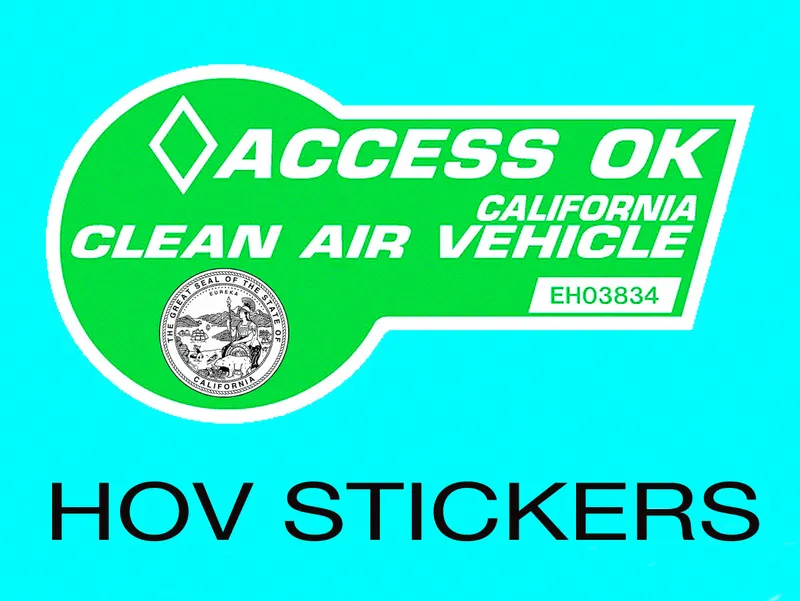
A study by UCLA’s Luskin Center says 40% of plug-ins in California are purchased to get access to HOV lanes
California drivers are finding plenty of reasons to purchase plug-in versions of EVs and hybrids; they feel good driving vehicles that create no carbon footprints, they’re incentivized by generous tax rebates and much lower fuel costs, and they enjoy the technology and high-tech futuristic styling. But believe it or not, a study by UCLA’s Luskin Center For Innovation of driving habits and car purchases in California Urban areas indicates that the ability to use potentially time-saving HOV (High Occupancy Vehicle) Lanes is one of the largest, if not the largest reason that drivers are purchasing EVs.
Cheryl Downey, a public relations consultant in Long Beach, says carpool lane access significantly influenced her family’s decision to buy a Chevy Volt plug-in hybrid in 2013. “We had a Prius and had lost our HOV privileges. We liked the Volt and realized it would get my husband back in the carpool lanes. It has cut his commute time in half.”
Research linking automobile sales and thousands of census tracts in Los Angeles, Sacramento, San Diego and San Francisco shows that state legislation opening up hundreds of miles of carpool lanes has been a huge incentive for California drivers, prompting them to purchase a plug-in. Doing so permits EV drivers to attach HOV Stickers to their vehicles: a primary means of gaining access to California’s time-saving diamond lanes.
The Luskin Center discovered that between 2010 and 2013, 24,000 plug-ins were purchased with HOV sticker usage in mind. “The key finding is that access to HOV lanes has a significant impact on sales,” said professor J.R. DeShazo, director of the Center and co-author of the study, which was funded by the California Air Resources Board. Says Assemblyman Richard Bloom (D – Santa Monica), an author of carpool lane measures for alternative vehicles: “Public policy like this continues to help California lower its greenhouse gas emissions and encourage green innovation.”
The Luskin Center’s conclusions are important because the California legislature granted HOV access based on the condition it would motivate people to buy or lease electric vehicles and plug-in hybrids that can be recharged at home or at public charging stations. When the access law comes up for review and renewal in 2019, the Luskin Center’s research will act as an encouragement to expand the successful HOV sticker program.
The findings are also a positive sign for California Governor Jerry Brown’s 2012 executive order to put 1 million zero-emission vehicles on California’s roadways by 2020 and activate 1.5 million by 2025. California leads the nation in enacting laws and establishing policies and programs that are reducing greenhouse gases, protecting air and water quality, promoting energy diversity and supporting low-carbon alternative fuel technologies. The state’s HOV sticker program is one small but important piece of the effort that has made California the most pro-electric vehicle state in the nation.
Thinking about purchasing a plug-in so you can take advantage of the far-faster lanes in LA? In case you missed how it works, here’s the explanation: California allows owners of electric and plug-in vehicles to travel “solo” in the High Occupancy Vehicle (HOV) lane – the old-fashioned carpool term is The Diamond Lane” – provided their car carries the correct Clean Air Vehicle sticker. Green stickers are for hybrids and extended-range electrics like the Chevrolet Volt that have zero-emission capability; white stickers are for fully electric vehicles like the Nissan Leaf, Tesla Model S, BMW i3 (the pure electric version), Chevrolet Spark, Fiat 500e, Ford Focus Electric, Kia Soul EV, Mercedes B-Class ED, Smart ForTwo ED and the Volkswagen e-Golf.
As of mid-January 2016, all 85,000 Green stickers that were allocated by the California legislature in 2011 are gone. But there are still plenty of white stickers available for pure electric vehicles. The state legislature fully intends to extend the green sticker program and allocate another 40,000 of them in the near future. CURRENT is recommending to its plug-in hybrid customers that they fill out the HOV form and send it in as soon as they get their car. When the program starts up again, the plug-in hybrid users who signed up will get their stickers based on when they applied.
BTW: A number of cities in California – Santa Monica is one of them – allow free metered parking within their city limits for electric vehicles with the correct stickers: a perk for early adopters of clean air technology. Check the internet to see if your city allows this.
Assisting customers with filing out their HOV forms, mailing them in and making sure they get their stickers on a timely basis is one of the many services that CURRENT offers its clients.
Recent Posts
- The 2022 Audi Q4 e-Tron SUV combines performance, practicality and luxury
- Ford's 2022 F150 Lightning All-Electric Truck is in high demand
- Legendary Audi performance is at the heart of the 2022 Audi e-tron GT and its RS sibling.
- Meet the Lexus RZ 450e – the luxury brand’s 1st EV
- The 2022 GV60 is Genesis’ first all-electric vehicle

